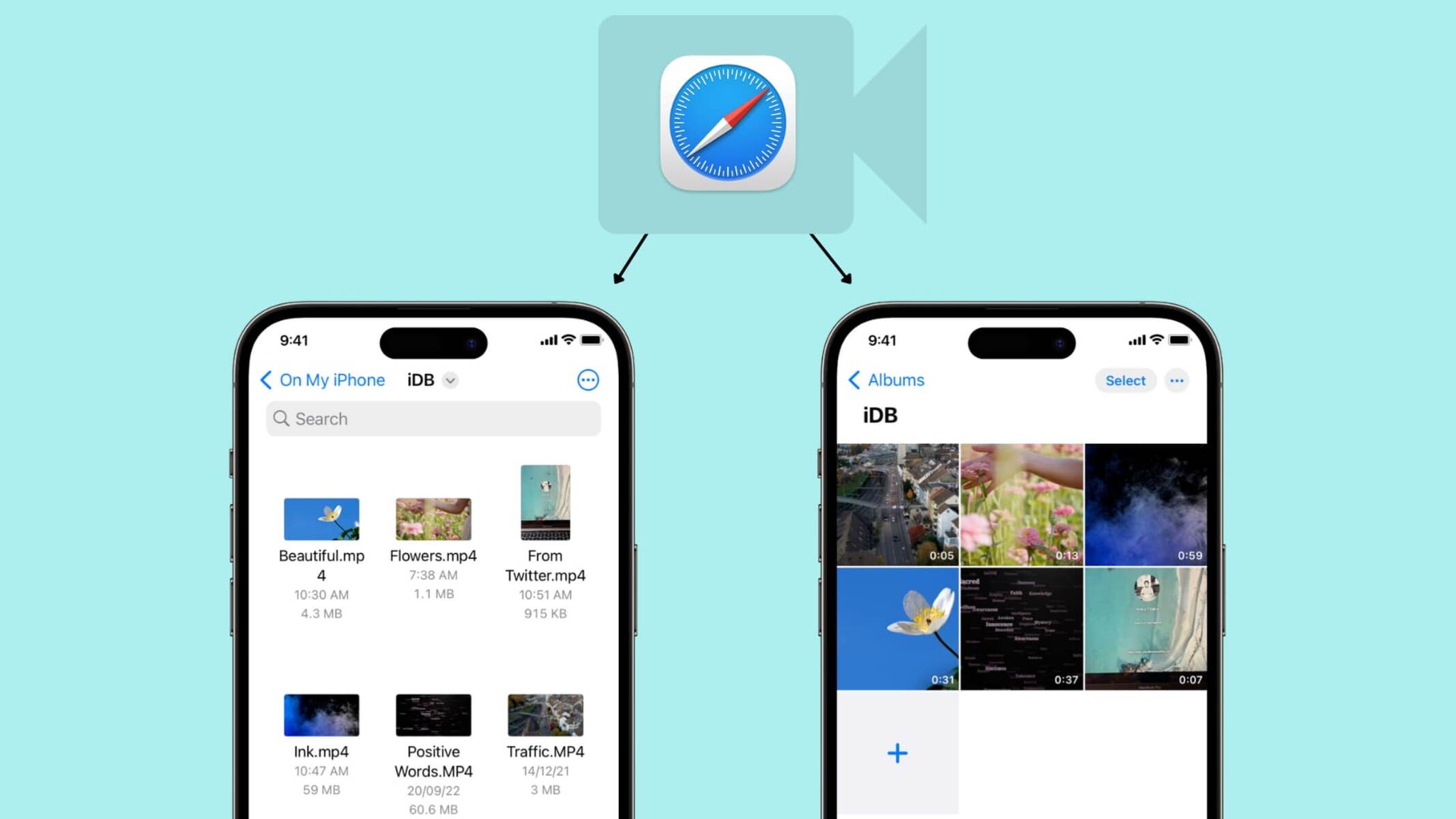Introduction
Welcome to our comprehensive guide on how to download URLs. In today’s digitally interconnected world, URLs (Uniform Resource Locators) play a vital role in accessing web content. Whether it’s a website, a video, or a file, URLs serve as the address or location of the desired resource on the internet. While we often browse these resources online, there are times when we need to download them for offline access, archiving purposes, or simply convenience.
In this guide, we will explore various methods and techniques to download URLs effectively and efficiently. We will cover both the basic and advanced functionalities to cater to users with different requirements. Whether you need to download a single webpage or a batch of files, this guide has got you covered.
Before diving into the specifics of URL downloading, it’s essential to have a basic understanding of what URLs are and how they are structured. URLs consist of several components, including the protocol (such as HTTP or HTTPS), the domain name or IP address of the server, and the file path or query parameters that specify the specific resource. Familiarizing yourself with these components will help you grasp the concepts better and make the most out of the downloading methods described in this guide.
In the upcoming sections, we will explore the features and techniques involved in downloading URLs. We will cover how to download a single URL, how to download multiple URLs simultaneously, and how to customize download options to suit your needs. Additionally, we will provide tips and best practices for effective URL downloading.
Whether you are an avid researcher, a content creator, or simply someone looking to save their favorite online content for offline access, this guide will equip you with the knowledge and tools necessary to download URLs successfully. So, let’s dive in and begin our journey into the world of URL downloading!
Understanding URLs
In order to effectively download URLs, it’s important to have a clear understanding of what URLs are and how they work. A Uniform Resource Locator, commonly known as a URL, is essentially the address of a specific resource on the internet. URLs are used to locate and access various types of content, including websites, files, images, videos, and more.
Every URL consists of several components that provide information about the resource and its location. One of the most recognizable parts of a URL is the protocol, which indicates the communication rules used to access the resource. The most commonly used protocols are HTTP (Hypertext Transfer Protocol) and HTTPS (HTTP Secure), which provide a secure connection between your browser and the server.
Another important component of a URL is the domain name or IP address. This identifies the server where the resource is hosted. For example, in the URL “https://www.example.com/article.html”, “www.example.com” is the domain name. If the IP address is used instead, it will be in the format of a series of numbers, such as “https://123.456.789.123/article.html”.
Additionally, a URL may contain a path that specifies the location of a specific file or resource on the server. For instance, in the URL “https://www.example.com/images/picture.jpg”, “/images/picture.jpg” is the file path, indicating that the desired resource is an image named “picture.jpg” located inside the “images” directory on the server.
Furthermore, URLs can also include query parameters, which are used to pass information to the server. Query parameters are appended to the end of the URL and typically consist of key-value pairs. For example, in the URL “https://www.example.com/search?q=keywords”, the query parameter “q=keywords” is used to specify the search query.
Understanding the structure and components of URLs is crucial when it comes to downloading them. By analyzing the URL, you can determine the type of resource you are dealing with and choose the appropriate method for downloading it. For example, downloading a webpage requires different techniques than downloading a video file.
Now that we have a good understanding of URLs and their components, let’s move on to exploring the different features and techniques involved in downloading URLs. We will cover various scenarios, ranging from downloading a single URL to downloading multiple URLs simultaneously, as well as customizing download options to suit your needs.
Feature 1: Downloading a Single URL
One of the fundamental functionalities when it comes to downloading URLs is the ability to download a single URL. This feature allows you to save a specific webpage or file directly to your device for offline access or archiving purposes.
To download a single URL, you can utilize various methods and tools depending on the type of resource you are dealing with.
If you want to download a webpage, you can simply use your web browser’s built-in functionality. Most web browsers offer the option to save a webpage as an HTML file, complete with all its associated resources such as images and stylesheets. Typically, you can find the “Save Page As” or “Save As” option in the browser’s menu or by right-clicking on the webpage. This will allow you to download the webpage and view it offline in your browser or any HTML viewer.
When it comes to downloading files such as images, videos, or documents, you can utilize various download managers or browser extensions. These tools enhance your downloading capabilities and provide additional features such as pause/resume functionality, multiple parallel downloads, and download scheduling.
There are also command-line tools available that allow you to download a URL using simple terminal commands. These tools, such as cURL or Wget, provide a more advanced approach to downloading URLs as they offer greater control and flexibility over the download process. With these tools, you can easily specify the output file name, set download options, and even automate the download process using scripts.
Additionally, if the URL points to a specific file hosted on a server, you can directly access the file by copying the URL and pasting it into a download manager or using the browser’s native download functionality. This method allows for quick and efficient downloading of individual files without the need to navigate through a webpage.
Remember to respect the terms of use and copyright restrictions when downloading content from the internet. Always ensure that you have the necessary rights or permissions to download and use the resources in accordance with the applicable laws.
Now that you know how to download a single URL, let’s move on to exploring the next feature: downloading multiple URLs simultaneously. This functionality is particularly useful when you need to download multiple files or webpages in a single operation.
Feature 2: Downloading Multiple URLs
Downloading a single URL is convenient when you need to save a specific webpage or file. However, there are instances where you may need to download multiple URLs simultaneously. This feature allows you to batch-download multiple resources, saving you time and effort.
To download multiple URLs efficiently, there are various methods and tools available depending on your specific requirements.
If you have a list of URLs that you want to download, you can make use of download managers or specialized tools that support batch downloading. These tools often provide a convenient way to import a list of URLs, either from a text file or by manually inputting them. Once the URLs are imported, you can set the download options, such as the maximum number of parallel downloads, the download location, and any other specific settings. This enables you to initiate the downloading process for multiple URLs simultaneously, saving you the hassle of downloading them one by one.
Alternatively, you can utilize browser extensions or plugins that are designed specifically for bulk downloading. These extensions often provide a user-friendly interface within the browser, allowing you to add multiple URLs to a download queue. This feature is particularly useful when you come across a webpage with numerous resources, such as images or videos, that you want to download in one go.
Moreover, if you have a large number of URLs that need to be downloaded programmatically, you can write custom scripts or utilize command-line tools that support batch downloading. These tools allow you to create automated workflows to download multiple URLs based on predefined criteria. By leveraging scripts or command-line tools, you gain greater flexibility and control over the download process, enabling you to customize it according to your specific needs.
When dealing with the bulk downloading of URLs, it’s important to consider factors such as bandwidth limitations, server restrictions, and download priority. Be mindful of the server’s capacity and avoid overloading it by setting appropriate download limits and intervals.
Downloading multiple URLs simultaneously is a powerful feature that can significantly streamline your workflow when acquiring multiple web resources. Whether you are a content creator, researcher, or simply need to download multiple files, this feature provides you with the convenience and efficiency you require.
Now that we have explored the feature of downloading multiple URLs, let’s proceed to the next section to learn about customizing download options.
Feature 3: Specifying Download Options
When it comes to downloading URLs, having the ability to specify download options provides you with greater control and flexibility over the process. This feature allows you to customize various aspects of the download, ensuring that it aligns with your specific requirements.
There are several download options that you can consider when downloading URLs:
1. Destination Folder: You can choose the folder where the downloaded files will be saved. This allows you to organize your downloads and keep them in specific locations for easy access.
2. File Naming Convention: You can define a naming pattern for the downloaded files. This can include variables such as the original filename, date and time stamp, or sequential numbering. Customizing the file names can help you easily identify and manage your downloaded resources.
3. Download Speed: Some download managers or tools allow you to set the maximum download speed. This option is useful when you want to control the bandwidth usage or ensure a smooth browsing experience while downloading in the background.
4. Download Format: Depending on the type of resource you are downloading, you may have the option to choose the desired format. For example, when downloading videos, you can select the output format (e.g., MP4 or AVI) or quality (e.g., 720p or 1080p) that suits your needs.
5. Download Permissions: In some cases, you may encounter websites or servers that have restrictions on downloading their content. You may need to authenticate, provide credentials, or agree to terms and conditions to gain access to the download. Specifying the necessary permissions ensures a smooth and successful download process.
6. Error Handling: When downloading multiple URLs, it’s important to have error handling mechanisms in place. Depending on the tool or manager you are using, you can specify how to handle errors such as connection timeouts, file not found, or incomplete downloads. Options may include retrying, skipping, or logging the errors for further analysis.
7. Proxy Settings: If you are accessing websites or resources that are behind a proxy server, you may need to configure the proxy settings to enable successful downloads. Many download tools provide options to specify proxy servers, authentication details, and port numbers, allowing you to access restricted content or enhance download speed.
By customizing these download options, you can tailor the download process according to your specific needs and preferences. This ensures a seamless and efficient downloading experience for retrieving the desired web resources.
Now that we have explored the various download options, let’s move on to the concluding section of our guide.
Conclusion
Downloading URLs is an essential skill in today’s digital age, whether you’re a researcher, content creator, or simply someone looking to save online resources for offline access. Throughout this guide, we have covered the key features and techniques for successfully downloading URLs.
We started by understanding the structure of URLs and how they function as addresses for web resources. This understanding helps us choose the appropriate download methods based on the type of resource we want to save.
We then explored the first feature: downloading a single URL. Whether it’s a webpage or a specific file, we discussed different approaches using web browsers, download managers, command-line tools, and direct file access to save a single URL to our devices.
In the second feature, we focused on the convenience of downloading multiple URLs simultaneously. We discussed how download managers, browser extensions, scripts, and command-line tools can handle batch downloading, saving time and effort when acquiring multiple web resources.
Lastly, we examined the importance of specifying download options. By customizing destination folders, file naming conventions, download speeds, formats, permissions, error handling, and proxy settings, we gain greater control and flexibility over the download process.
With these features and techniques at our disposal, we can efficiently download URLs while considering factors such as bandwidth limitations, server restrictions, and copyright regulations.
As technology continues to evolve, the methods and tools for downloading URLs will also advance. It’s important to stay updated with the latest trends and embrace new techniques that streamline the process further.
Now equipped with the knowledge and skills to download URLs, you can save valuable online content, conduct research offline, and create a personalized library of resources at your fingertips. Start exploring the possibilities and make the most out of the internet’s vast collection of information and media.
Happy downloading!

























